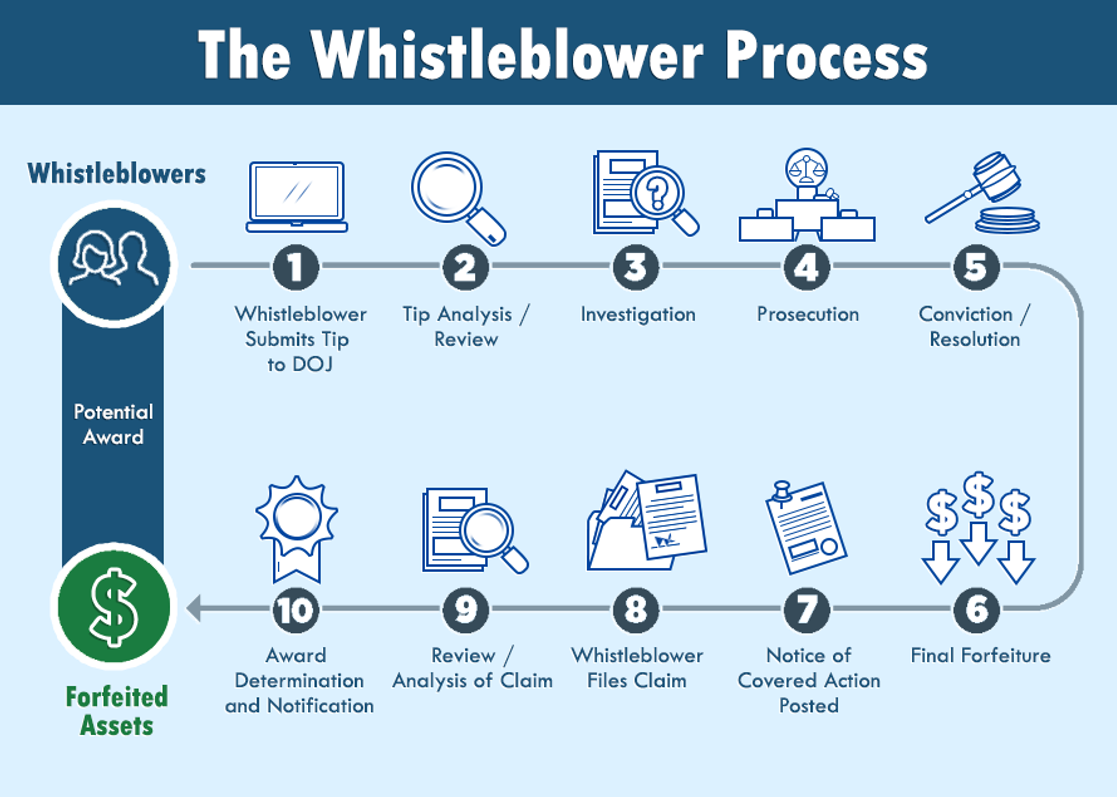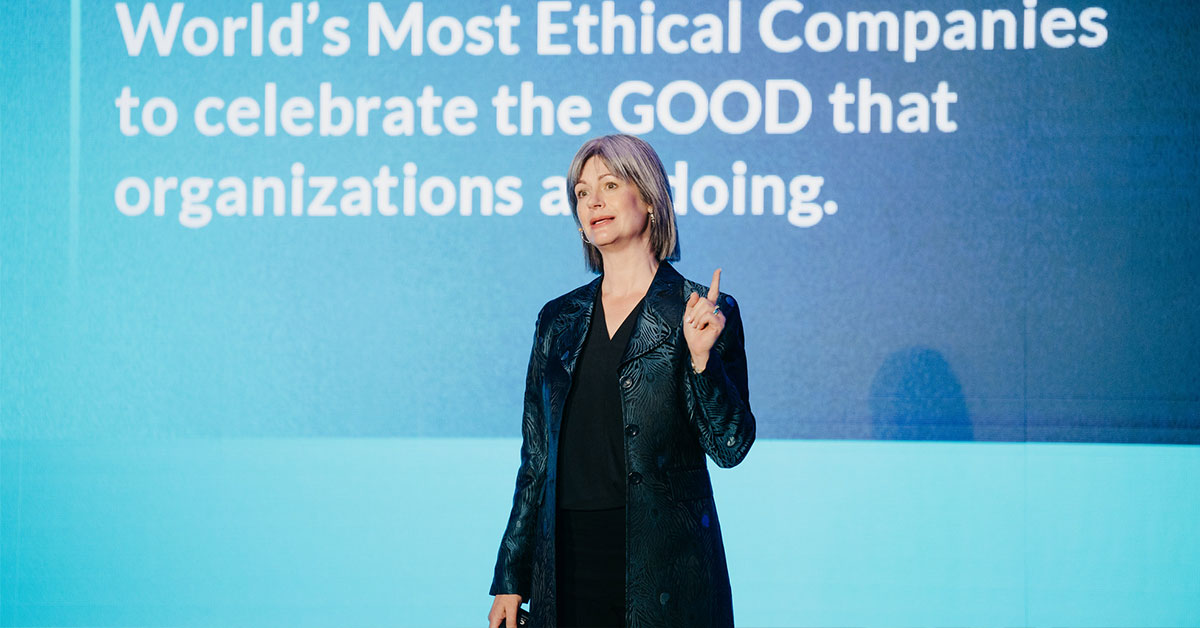Culture surveys are one of the most fundamental tools that organizations can employ as part of their efforts to measure, analyze, and transform their workplace into bastions of integrity. Whether an organization is new to conducting speak-up culture surveys, or whether it does them often, knowing what to do after the survey results come in is just as important as getting those results in the first place.
You can’t really advance your ethical culture unless you measure it. Otherwise, how will you know where your strengths and opportunities lie?
For many companies, the start of this process is a culture assessment that surveys perceptions of their speak-up culture. Such surveys can deliver a ton of helpful data, but communicating post-assessment learnings and action plans can make the difference between an exercise that doesn’t really change anything and one that can help an organization take a meaningful step forward on its ethics and compliance maturity journey.
But this is easier said than done. As a matter of fact, the work we do here at Ethisphere to measure ethical cultures across organizations and around the world has identified that there is not a discrete activity that one should think about in terms of measuring culture. Really, it is a journey. It is a life cycle.
That is true whether you’re planning for your assessment, conducting the measurement, analyzing results, informing key stakeholders, or moving into actually improving and transforming your culture. If any piece of that puzzle is not sufficiently planned, if it’s not paid attention to, you risk falling short in your efforts to measure and improve your speak up culture.
As a tool to measure speak-up culture, surveys are pretty ubiquitous—one look at the data from the World’s Most Ethical Companies certainly supports that. But organizations then need to take the time to think strategically about how to take those results in order to get that information into the right stakeholders’ hands at the right time to ensure full support in order to make cultural improvements a reality. Organizations that do that will find themselves in the best position to succeed.
These Things Take Time
A great question we get from a lot of companies is what kind of time horizon does it take not only to conduct a culture assessment, but all of the long-term work that comes after? The unsatisfactory answer to that is: it depends on the type of organization in place. What are the ways decisions are made? What sort of influence does the compliance team have internally to get things done? What’s the relationship with HR and other on-the-ground stakeholders in getting the message out in various modalities?
A lot of factors are at play in terms of how long you should begin to think about in terms of preparing for measuring your own culture. When we partner with organizations, we usually allocate three months or so to ensure that we have enough time to sufficiently plan, measure and assess.
Looking to the inform phase of the process, where we see many organizations fall short is whether they are thinking through their survey’s data points strategically, and ensuring those insights get into the right hands to affect transformational change. With that in mind, here are a few points to consider:
How soon can you get the information out to the various stakeholders? Who are these stakeholders? And what’s the required messaging for each? The information you provide to your board on what you found in your latest effort to measure speak-up culture may vary dramatically versus what your division leaders get, or what all employees will receive.
That “all employees” group is often overlooked, by the way. When you measure your speak-up culture, don’t neglect turning that information around and putting it back in the hands of your entire workforce as soon as you can. Not necessarily a full readout of what you found, but really make sure that you capitalize on the effort you just undertook and get some key opportunity data, some key insights, and some summary findings from that effort and put them back into the employees’ hands. Take that opportunity to thank them for speaking out, speaking up, and participating in this effort.
Often times, organizations lean heavily on surveys as a mechanism by following up with all employees who did have a chance to partake and quite frankly, were candid in answering questions that could be considered sensitive and directly addressed people’s ability to speak up comfortably (e.g., What do you think about your manager? What do you think about senior leadership?). Really take the time to thank them for that: “We received your message. Thank you for participating. Here’s what we saw. Here’s what you told us. Here’s what we plan on doing about it. Here are some suggestions of what we want to do with this information in order to make ourselves a better a better place to work and a better place to be.”
This gives employees a sense of comfort that they have been heard. And secondly, it builds goodwill for future efforts to measure, knowing that when they do speak up and participate, that they will be heard and things will change as a result.
Data Both Confirms and Reveals
Sometimes when organizations measure their culture, what they expect to find and what they actually find might not line up in a positive way. Simply put, the organization may think it is stronger in some areas than it actually is, or weaknesses are revealed that were not noticed before. Sometimes, organizations react poorly to this and downplay the results, or simply don’t share them as way to contain bad news.
Short of any sort of technological malfunction in the survey process that would credibly give doubt to the reliability of what you just measured, there is not a single legitimate reason why an organization wouldn’t want to get its survey results—no matter what story they tell—into stakeholder hands to begin the journey of improvement.
A lot of the concern in situations where folks are concerned about what the data is telling them stems from the organization having insufficiently preparing leaders and stakeholders before the survey went out to let them know what changes may be coming.
Whatever decisions or action plans that you think will be put forward as a result of your survey results, let your C-suite and business division line leaders in particular know that this effort is forthcoming, what you plan on measuring, what you want to find out, and what questions will be asked. That will give folks a chance to buy into the process and weigh in. Ideally, they can support your communications strategy when you are ready to send the message out to your broader employee base to participate in this type of assessment. But it also prepares them to receive the data, and to act and improve on what they’ve found.
If you don’t take the time to prepare key people internally, that the survey is coming and what you plan on doing with the date you receive, then you won’t really know how key decision-makers will respond. Advance planning really gets ahead of that concern when and if poorer-than-desired results come in, and gives you a head start on what to do about those results.
On Communicating Results
There is no one perfect way to communicate the results of a culture survey. It is different for every organization. So how, then, can those who oversee the survey process best work with their internal communications department to make sure that when the results come in, the communications or the storytelling that comes afterwards is optimized?
This really comes down to whether there is an existing positive relationship between ethics and compliance and their allied support functions, including communications. When your results come in, depending upon the scope with which you have measured and the potential urgency with which the data suggests you should act, you will need to rely on your partners to get buy-in; to get the message out; and to get the sufficient authority to ensure that whatever action plans come out of this, the folks who are responsible for them will be held accountable for their outcomes.
That will require working with human resources to see what mechanisms are in place to perhaps bake in some of these action plan outcomes into performance considerations for key leaders to consider as key performance indicators for individuals across the company, to elevate this to a high enough level that it reaches strategic importance.
Your communications folks will be instrumental. At almost every organization that undergoes a culture survey, there is an opportunity to improve the communications around some dimension of the survey results, whether its at the team level or the enterprise level. It is essential that you are able to rely on your communications team to help you do that. For those organizations that don’t have those communication resources on hand, Ethisphere provides a rich content library that ethics and compliance professionals can draw from to help their outreach efforts. This includes manager toolkits, the EthiToons series of humorous visual messaging, and other turnkey resources. Ethics and compliance leaders can use, modify, and rebrand these resources as they need to, in order to get them into the hands of their people leaders to facilitate conversations on organizational justice, for example, or how to feel comfortable in reporting amongst their team members.
Once again, this is an area where, if you prepare the communications team in advance of what’s coming, they will certainly appreciate the heads-up that they will be needed in three, four, or five months’ time, and can even collaborate with you on assembling a messaging content library beforehand. Any time you can dedicate thought to advance planning, that will only set you up for success down the road.
Examples from the Field
Some companies, once they get their survey results, go about the communications or storytelling aspect of this in a really innovative or effective way and get a head start in improving their culture. But for many organizations, this is an area where they tend to struggle. And it can be very difficult to improve on that if they don’t have some outside perspective on it.
There is one example we often cite where an organization, upon seeing the results of our culture assessment, noticed that the perceptions of the senior leadership team—both in demonstrating integrity in their speech, as well as their actions—was lacking. In particular, the speech component really surprised this organization. The CEO in question said, “How can this be? We make it a point to discuss integrity at the forefront of every town hall meeting. We spend time on integrity as a core value and why it’s so important and what we do about it. How can these numbers be so low?” We came to discover that although the CEO was correct in that the message was consistently delivered through things like town halls, when we looked at the attendee data for these town hall meetings or other venues in which integrity is being discussed by the senior leadership team, they were only being attended by less than 10% of the organization.
When following through and looking at whether folks are actually receiving the message, you may have this beautifully crafted message and the right personnel delivering it. But if no one’s on the receiving end, it’s all for naught. So when you look at that, ask yourself if the modality you’ve selected to deliver this message is appropriate. Is it being received? Is the messenger the right person to deliver this message? Is the message itself crafted in a way that’s easily understood? Given the audience’s regional accommodations, education levels, and experience levels, are you able to deliver your message to them in a way that is most easy for them to acknowledge that it has been received?
Messaging is a two-part process: both the delivery of the message and understanding if that message is being received. When this is done well, it really shines in terms of improving your culture metrics.
Measurement as a Cyclical Process
The organizations that tend to get the best results from a culture assessment do not approach it as a once-and-done engagement, but rather routinely examine, measure, analyze and transform their culture as part of an ongoing maturity journey.
Taking a snapshot provides a look at how your employees perceive speak-up culture, how they perceive integrity, and how they perceive the values of the organization at a particular moment in time. It is far more effective to take a lifecycle view of these things. Every organization is at some point on their culture measurement journey. What about your culture do you wish to measure? How will you execute your measurement effort? How will you analyze the relevant insights you capture? How will you determine what good looks like, and how will you assess yourself against that benchmark? And then, how will you get the insights you’ve gathered into the heads and hands of your employees, key leaders, and Board in a way that is appropriate for them? What will it take to align everyone around the action plans to improve and transform your culture, based on what you have seen in the data and communicated?
After that, the cycle repeats. Any organization that begins their journey with that cycle in mind tends to set themselves up for long-term success. There are always bumps along the way, and for organizations that are engaging on this for the first time, it’s a big lift. Developing a credible survey is challenging. Getting buy-in to secure time on everyone’s calendar to take the survey is challenging. There are competing interests and even competing engagement surveys. Meanwhile, the organization needs to hit its quarterly numbers, folks take vacation, and simply finding the time on everyone’s schedule when they are already quite busy can be a huge challenge. But again, this is why it is best to position this effort as part of a broad, long-term way to add value through the continuous monitoring and improvement of the culture. That is a great way to set yourself up for success out of the gate.
Frequency and Timing
How often organizations typically undergo culture assessments varies. Some that are farther along on their maturity journey, and have the ability, might do it on an annual basis. This is not the majority, however. A more common schedule is every 18 to 24 months as part of a multi-year curriculum that focuses on various topics in a dynamic way that can account for the findings of previous assessments.
Year One companies might start with a full assessment of the eight pillars of ethical culture—the eight key themes or topics that act as the foundation of any culture of integrity. In Year Two, start with a full assessment of those eight pillars.
Year Two might be best thought of as a pulse check on what was found in Year One. It’s a chance to go deeper into those areas of opportunity that were identified in Year One, as well as to check in on your remediation efforts. This can happen almost in real time with a three-question pulse survey on specific issues (e.g., how your team in the Midwest is doing based upon what you saw from their higher-than-normal or higher-than-anticipated levels of pressure) or more broad concerns (e.g., how employees generally feel pressure in the workplace).
That cadence is a way to keep a more regular take on perceptions without overburdening the organization with huge company-wide survey efforts every 12 months (which for many teams simply wouldn’t be helpful or may prove overly costly from a resource headcount or FTE hours spent taking surveys).
Something worth considering—and there is no easy answer for this—is how to maintain the internal knowledge of what you’ve been measuring in between assessments when personnel might change during that time. This is something every team should ask themselves. It may come down to how robust the team’s succession plan is and how they’re developing their own internal talent pipeline. Many ethics and compliance teams are very thinly staffed, so it may just come down to getting sufficient documentation as you go through the assessment process to safeguard on the learnings being lost between assessments.
As ethics and compliance professionals, it’s incumbent on us to make sure that we leaving our successors with the right information to continue to carry the torch forward with improving our cultures. But that will depend on team structure, bench depth, and other factors. Until best practices emerge on this, it remains a good topic to consider and for which to share success stories.
To connect with the Ethisphere Culture team and learn how you can measure and elevate your organization’s culture, please click here. For further reading, check out the 2024 Ethical Culture Report, and the special report, The Eight Pillars of an Ethical Culture.
ABOUT THE AUTHOR
Doug Allen is the Vice President of Data Strategy at Ethisphere, where he leads benchmarking, certification, and partnership efforts. He has extensive experience with providing compliance-and ethics-related advisory services, including developing compliance and ethics risk assessments, codes of conduct, corporate policies and procedures, and communication and training curriculum plans.






